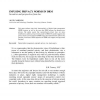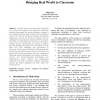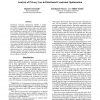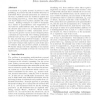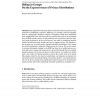ISSA
2004
14 years 28 days ago
2004
It seems fair to assume that employers provide e-mail facilities to employees as tools intended for workrelated activity. As such it further seems fair to assume that employers wo...
IFIP11
2004
14 years 28 days ago
2004
: This paper outlines some basic characteristics of digital rights management (DRM) systems, as well as the ways that DRM systems can threaten user privacy. The author asserts that...
ECIS
2001
14 years 28 days ago
2001
The primary responsibility of the Chief Privacy Officer (CPO) is to protect online consumer privacy by developing an organization's privacy policy and ensuring compliance wit...
ICIS
2004
14 years 28 days ago
2004
Location-based services (LBS), enabled by advances in mobile and positioning technologies, have afforded users with a pervasive flexibility to be uniquely addressable and to acces...
ICIS
2004
14 years 28 days ago
2004
Personal privacy has become one of the pressure points that comprises utmost primacy in the scientific community. An often debated privacy issue concerns the means of soliciting c...
FECS
2006
14 years 28 days ago
2006
DMIN
2006
14 years 28 days ago
2006
Data mining techniques, in spite of their benefit in a wide range of applications have also raised threat to privacy and data security. This paper addresses the problem of preservi...
AAAI
2006
14 years 29 days ago
2006
Distributed Constraint Optimization (DCOP) is rapidly emerging as a prominent technique for multiagent coordination. However, despite agent privacy being a key motivation for appl...
SDM
2007
SIAM
14 years 29 days ago
2007
SIAM
k-anonymity is a popular measure of privacy for data publishing: It measures the risk of identity-disclosure of individuals whose personal information are released in the form of ...
SEC
2008
14 years 29 days ago
2008
Many applications inherently disclose information because perfect privacy protection is prohibitively expensive. RFID tags, for example, cannot be equipped with the cryptographic p...

